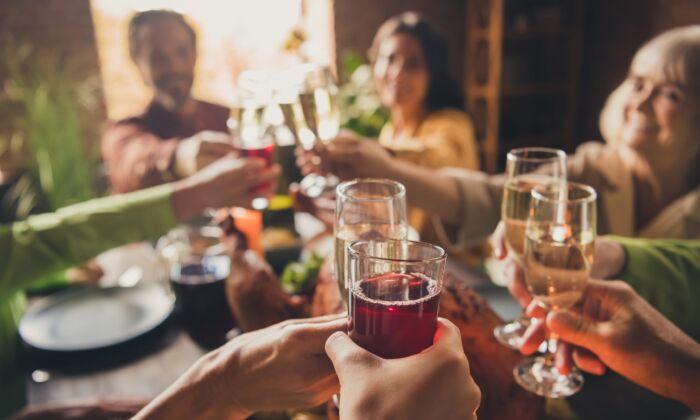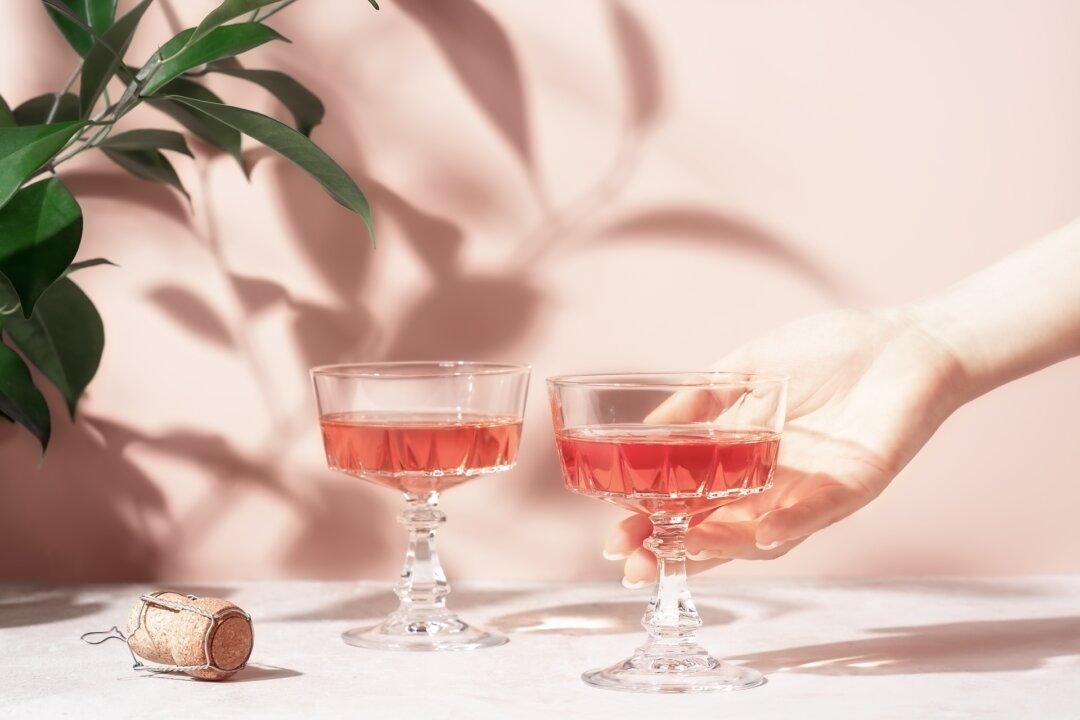When several people gather to celebrate, such as at year-end holiday parties, the beverages often aren’t particularly upscale, which is perfectly appropriate.
In multiparty festivities, people rarely pay attention to the nuances that are in the glass. It doesn’t make sense to serve classics like 1961 Chateau Petrus at large gatherings. Classic wines call for introspection and sharing with people who appreciate them—and won’t put ice cubes in them!
Large holiday gatherings usually call for simple, tasty wines. At such events, some people can overindulge, which is a pitfall of any large gathering where libations flow freely. Hosts must be aware of such issues and plan ahead.
Wine is one of the few alcoholic beverages of restraint. Moderation-wise, wine makes more sense than do hard spirits, many of which can be made much easier to consume by adding additional flavors (i.e., cola) that can mask the alcohol.
But wine can also prove to be risky.
For example, a chardonnay whose label says it has 14 percent alcohol may seem to be moderate in relationship to the 40 percent alcohol of whiskey. But compare that chardonnay to a German riesling that comes in at 7 percent alcohol. It’s evident that the latter can be saner and perhaps even tastier.
Those who are concerned about total alcohol intake have several options available today that didn’t exist just a few years ago. Among the lower-alcohol wines available to consumers, there are also several New Zealand sauvignon blancs, such as Giesen, a Marlborough producer, whose dealcoholized SB ($10 to $12) is tasty and true to type.
Savvy wine lovers also know of the exciting and refreshing white wine called vinho verde of Portugal. One superb value is from Broadbent, with only 9 percent alcohol ($11).
Lower-alcohol beers also can be excellent choices. One of the most interesting nonalcoholic beverages is from Lagunitas, the Northern California brewer. It makes a delightful beer alternative with no alcohol.
Hoppy Refresher, as the company calls it (locals call it “hop water”) is described on the company website as “chock-full of Citra, Equinox, and Centennial hops for a big splash of flavor that’s surprisingly fruity.”
Mimosas are another festive drink you can easily make at home with inexpensive sparkling wines (cava from Spain or prosecco from Italy) and orange juice. The more juice you use, the less important the quality of the sparkling wine. It’s a waste of money to use a quality French Champagne to make mimosas because adding anything to a fine wine almost always dilutes the qualities of the wine we are paying more to get.
One popular mixed beverage for festive occasions once was known as a “champagne cocktail,” with a lowercase c. It didn’t necessarily use real French Champagne. It called for a bit of sugar as well as a dash of bitters, and today isn’t as popular as it was a century ago.
I suspect that the champagne cocktail became popular after the end of Prohibition (1933), when quality French Champagne (post-World War I) was expensive. At the time, cheaper Champagne was sour to American palates.
As a result, the drink needed a cube of sugar to make it palatable.





